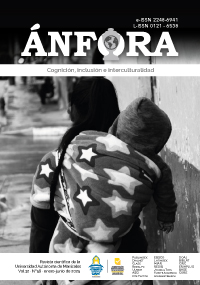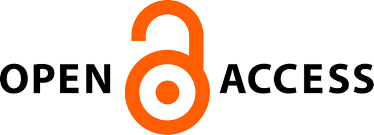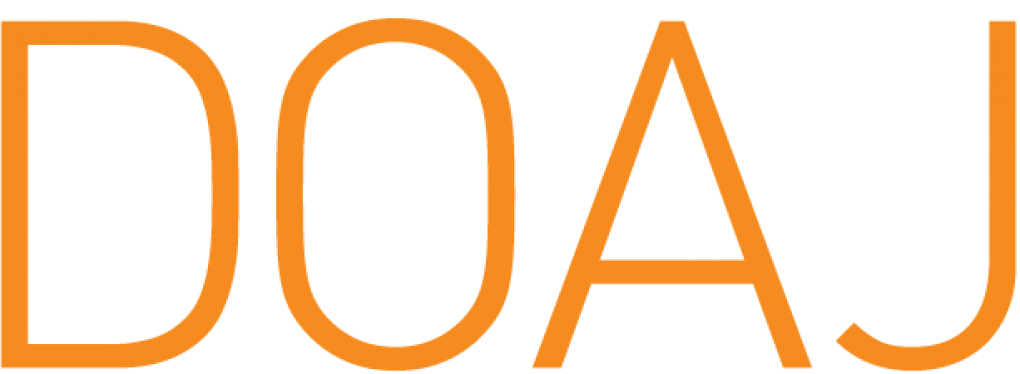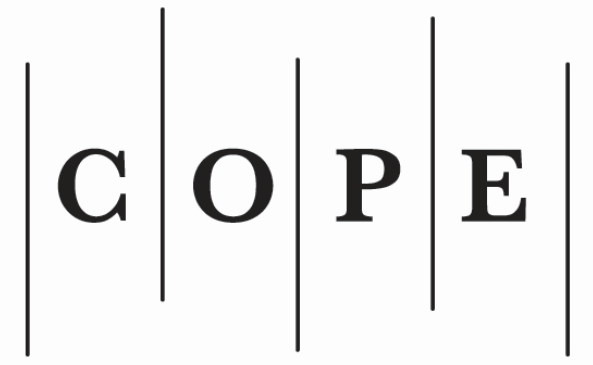Learning in Deaf Adults. The Importance of Understanding Deaf Culture in Contemporary Methods
Main Article Content
Abstract
Objective: Learning is a constant process in human beings. This paper reviews the relationship between learning methods of deaf adults and the respect held for their culture in several countries of the world. Methodology: Scientific papers in Spanish and English over the last five years were reviewed. From 244 articles, 19 were chosen for their relevance to the research goal. Results: Results were grouped by topics of interest in deaf adult learning. Five neural methods were found, four validated in hearing people and tested in deaf adults, five serious games, three methods using technology, and two learning methods according to participants' cognitive abilities. Conclusions: Nineteen papers observed that there are professionals from all areas interested in this issue; in addition, there is a growing interest in learning about the deaf culture. There is a need to research further on the results of the methods in social and/or working contexts to improve the inclusion of this population.
How to Cite
Downloads
Metrics
Article Details
Learning method, adult learning, cultural minority, deaf, culture
Chovaz, C. J., Rennison, V., & Chorostecki, D. O. (2021). The Validity of the Test of Memory Malingering (TOMM) with Deaf Individuals. The Clinical Neuropsychologist, 35(3), 597-614. https://doi.org/10.1080/13854046.2019.1696408
De Clerck, A. M. (2019). Creative Biographical Responses to Epistemological and Methodological Challenges in Generating a Deaf Life Story Telling Instrument. Contemporary Social Science, 14(3-4), 475-499. https://doi.org/10.1080/21582041.2018.1448940
Duncan, M. K., & Lederberg, A. R. (2018). Relations Between Teacher Talk Characteristics and Child Language in Spoken-Language Deaf and Hardof- Hearing Classrooms. Journal of Speech, Language, and Hearing Research, 61(12), 2977-2995. https://doi.org/10.1044/2018_JSLHR-L-17-0475
Economou, D., Gonzalez Russi, M., Doumanis, I., Mentzelopoulos, M., Bouki, V., & Ferguson, J. (2020). Using Serious Games for Learning British Sign Language Combining Video, Enhanced Interactivity, and VR Technology.
Journal of Universal Computer Science, 26(8), 996-1016. https://lib.jucs.org/article/24100/
Emmorey, K., & Lee, B. (2021). Teaching & Learning Guide for: The Neurocognitive Basis of Skilled Reading in Prelingually and Profoundly Deaf Adults. Language and Linguistics Compass, 15(4), 1-7. https://doi.org/10.1111/lnc3.12410
Friedner, M., & Kusters, A. (2020). Deaf Anthropology. Annual Review of Anthropology, 49(2), 31-47. https://doi.org/10.1146/annurev-anthro-010220-034545
Giustolisi, B., & Emmorey, K. (2018). Visual Statistical Learning With Stimuli Presented Sequentially Across Space and Time in Deaf and Hearing Adults. Cognitive Science, 42(8), 3177-3190. https://doi.org/10.1111/cogs.12691
Glezer, L. S., Weisberg, J., O’Grady Farnadya, C., McCullough, S., Midgley, K. J., Holcomb, P. J., & Emmorey, K. (2018). Orthographic and Phonological Selectivity Across the Reading System in Deaf Skilled Readers. Neuropsychologia, 117, 500-512. https://doi.org/10.1016/j.neuropsychologia.2018.07.010
Hall, W. C., Smith, S. R., Sutter, E. J., DeWindt, L. A., & Dye, T. D. (2018). Considering Parental Hearing Status as a Social Determinant of Deaf Population Health: Insights from Experiences of the "Dinner Table Syndrome". PLOS ONE, 13(9), 1-8. https://doi.org/10.1371/journal.pone.0202169
Hansen, E. G., Loew, R. C., Laitusis, C. C., Kushalnagar, P., Pagliaro, C. M., & Kurz, C. (2018). Usability of American Sign Language Videos for Presenting Mathematics Assessment Content. Journal of Deaf Studies and Deaf Education, 23(3), 284-294 https://academic.oup.com/jdsde/article/23/3/284/4969363
Hisham, B., & Hamouda, A. (2019). Supervised Learning Classifiers for Arabic Gestures Recognition Using Kinect V2. SN Applied Sciences, 1, 1-21. https://doi.org/10.1007/s42452-019-0771-2
Hisham, B., & Hamouda, A. (2021). Arabic Sign Language Recognition Using Ada-Boosting Based on a Leap Motion Controller. Int. j. inf. tecnol., 13, 1221–1234. https://doi.org/10.1007/s41870-020-00518-5
Hoffman, D., Wolsey, J.-L., Andrews, J., & Clark, D. (2017). Translanguaging Supports Reading with Deaf Adult Bilinguals: A Qualitative Approach. The Qualitative Report, 22(7), 1925-1944. https://doi.org/10.46743/21603715/2017.2760
Kanazawa, Y., Nakamura, K., Ishii, T., Aso, T., Yamazaki, H., & Omori, K. (2017). Phonological Memory in Sign Language Relies on the Visuomotor Neural System Outside the Left Hemisphere Language Network. PLoS ONE, 12(9), 1-15. https://doi.org/10.1371/journal.pone.0177599
Kandemir, H., & Kose, H. (2021). Development of Adaptive Human–Computer Interaction Games to Evaluate Attention. Robotica, 40(1), 56-76. https://doi.org/10.1017/S0263574721000370
Khairuddin, K. F., Miles, S., & McCracken, W. (2018). Deaf Learners’ Experiences in Malaysian Schools: Access, Equality and Communication. Social Inclusion, 6(2), 46-55. https://doi.org/10.17645/si.v6i2.1345
Kung, M. S., Lozano, A., Covas, V. J., Rivera-González, L., Hernández-Blanco, Y. Y., Diaz-Algorri, Y., & Chinapen, S. (2021). Assessing Medical Students’ Knowledge of the Deaf Culture and Community in Puerto Rico: A Descriptive Study. Journal of Medical Education and Curricular Development, 8, 1-5. https://doi.org/10.1177/2382120521992326
Kyle, J. y Woll, B. (1985). Sign Language: The Study of Deaf People d their Language. Cambridge.
Laurent, S., Boucheix, J.-M., Argon, S., Hidalgo-Muñoz, A. R., & Paire-Ficout, L. (2019). Can Animation Compensate for Temporal Processing Difficulties in Deaf People? Appl Cognit Psychol, 34(2), 308-317. https://doi.org/10.1002/acp.3617
Lawyer, G., de García, B. G., & Karnopp, L. B. (2018). Deaf Education and Deaf Culture: Lessons from Latin America. American Annals of the Deaf, 162(5), 486–488. https://doi.org/10.1353/aad.2018.0006
Malaia, E. A., Krebs, J., Roehm, D., & Wilbur, R. B. (2020). Age of Acquisition Effects Differ Across Linguistic Domains in Sign Language: EEG Evidence. Brain and Language 200, 1-10. https://doi.org/10.1016/j.bandl.2019.104708
O’Connell, N. P. (2014). ‘Confessing to Wilful Disobedience’: An Ethnographic Study of Deaf People’s Experience of Catholic Religious Schooling in the Republic of Ireland. British Journal of Religious Education, 33(3), 229-247.
https://doi.org/10.1080/03323315.2014.940683
Organización Mundial de la Salud [OMS]. (2 de marzo de 2021). La OMS advierte que, según las previsiones, una de cada cuatro personas presentará problemas auditivos en 2050. https://www.who.int/es/news/item/02-03-2021-who-
1-in-4-people-projected-to-have-hearing-problems-by-2050
Otoom, M., & Alzubaidi, M. A. (2018). Ambient Intelligence Framework for Real-Time Speech-to-Sign Translation. Assistive Technology, 30(3), 119-132. https://doi.org/10.1080/10400435.2016.1268218
Padden, C. (1980). The Deaf Community and the Culture of Deaf People. In C. Baker, & R. Pattison (Eds.) Sign Language and the Deaf Community (pp. 89-103). Silver Spring: National Association of the Deaf.
Paiva, H., Furlan, J. B., & Pinheiro, P. R. (2020). An Educational Game to teach Numbers in Brazilian Sign Language while having Fun. Computers in Human Behavior, 107, 1-51. https://doi.org/10.1016/j.chb.2018.12.003
Pappas, M. A., Demertzi, E., Papagerasimou, Y., Koukianakis, L., Kouremenos, D., Loukidis, I., & Drigas, A. S. (2018). E-Learning for Deaf Adults from a User-Centered Perspective. Education Sciences, 8(4), 1-15. https://doi.org/10.3390/educsci8040206
Pfister, A. E. (2017). Forbidden Signs: Deafness and Language Socialization in Mexico City. ETHOS, 45(1), 139–161. https://doi.org/10.1111/etho.12151
Que, M., Jiang, X., Yi, C., Gui, P., Jiang, Y., Zhou, Y.-D., & Wang, L. (2018). Language and Sensory Neural Plasticity in the Superior Temporal Cortex of the Deaf. Neural Plasticity, 2018, 1-18. https://doi.org/10.1155/2018/9456891
Retief, M. & Letšosa, R. (2018). ‘Models of disability: A brief overview’, HTS Teologiese Studies/ Theological Studies, 74(1), 1-8. https://doi.org/10.4102/hts.v74i1.4738
Rodrigues, F. M., Rato, J. R., Mineiro, A., & Holmström, I. (2022). Unveiling Teachers’ Beliefs on Visual Cognition and Learning Styles of Deaf and Hard of Hearing Students: A Portuguese-Swedish Study. PLoS ONE, 17(2), 1-20. https://doi.org/10.1371/journal.pone.0263216
Ruiz-Stovel, V. D., González-Garrido, A. A., Gómez-Velázquez, F. R., Alvarado-Rodríguez, F. J., & Gallardo-Moreno, G. B. (2021). Quantitative EEG Measures in Profoundly Deaf and Normal Hearing Individuals while Performing a Vibrotactile Temporal Discrimination Task. International Journal of Psychophysiology, 166, 71-82. https://doi.org/10.1016/j.ijpsycho.2021.05.007
Saifan, R. R., Dweik, W., & Abdel-Majeed, M. (2018). A Machine Learning Based Deaf Assistance Digital System. Comput Appl Eng Educ, 26(4), 1008-1019. https://doi.org/10.1002/cae.21952
Silva, N. M., Alves, J., Castro, A. B., & Varela, J. H. (2020). Music Education for the Deaf: Characteristics, Barriers and Successful Practices. Educação e Pesquisa, 46, 1-17. https://doi.org/10.1590/S1678-4634202046221995
Smith, M. M. (2019). Innovations for Supporting Communication: Opportunities and Challenges for People with Complex Communication Needs. Folia Phoniatrica et Logopaedica, 71(4), 156–167. https://doi.org/10.1159/000496729
Sorgini, F., Caliò, R., Chiara Carrozza, M., & Oddo, C. M. (2018). Haptic-Assistive Technologies for Audition and Vision Sensory Disabilities. Disability and Rehabilitation: Assistive Technology, 13(4), 394-421. https://doi.org/10.1080/17483107.2017.1385100
Suranata, K., Atmoko, A., Bolo Rangka, I., & Ifdil, I. (2017). Risks and Resilience of Students with Hearing Impairment in An Inclusive School at Bengkala, Bali, Indonesia. Special Education, 2(37), 165-214. https://doi.org/10.15388/SE.2017.4
Sze, F., Xiao Wei, M., & Lam, D. (2020). Development of the Hong Kong Sign Language Sentence Repetition Test. The Journal of Deaf Studies and Deaf Education, 25(3), 298–317. https://doi.org/10.1093/deafed/enaa001
Takala, M., & Sume, H. (2018). Hearing-Impaired Pupils in Mainstream Education in Finland: Teachers’ Experiences of Inclusion and Support. European Journal of Special Needs Education, 33(1), 134-147. https://doi.org/10.1080/08856257.2017.1306965
Tang, J., Cheng, H., Zhao, Y., & Guo, H. (2018). Structured Dynamic Time Warping for Continuous Hand Trajectory Gesture Recognition. Pattern Recognition, 80, 21-31. https://doi.org/10.1016/j.patcog.2018.02.011
Van de Weijer, J., Åkerlund, V., Johansson, V., & Sahlén, B. (2019). Writing Intervention in University Students with Normal Hearing and in Those with Hearing Impairment: Can Observational Learning Improve Argumentative
Text Writing? Logopedics Phoniatrics Vocology, 44(3), 115-123. https://doi.org/10.1080/14015439.2017.1418427
Vesel, J., & Robillard, T. (2017). Accessing Science Museum Exhibits with Interactive Signing Dictionaries. Journal of Visual Literacy, 36(3-4), 125-141. https://doi.org/10.1080/1051144X.2017.1397310
Weiss, E. (2003). La investigación educativa en México 1992-2002. Grupo Ideograma Editores.
Yusa, N., Kim, J., Koizumi, M., Sugiura, M., & Kawashima, R. (2017). Social Interaction Affects Neural Outcomes of Sign Language Learning As a Foreign Language in Adults. Frontiers in Human Neuroscience, 11, 1-11. https://doi.org/10.3389/fnhum.2017.00115

This work is licensed under a Creative Commons Attribution-NonCommercial-ShareAlike 4.0 International License.
Once the manuscript is approved, the authors should file and sign the Right Transfer Format.


 https://orcid.org/0000-0001-5305-1280
https://orcid.org/0000-0001-5305-1280










